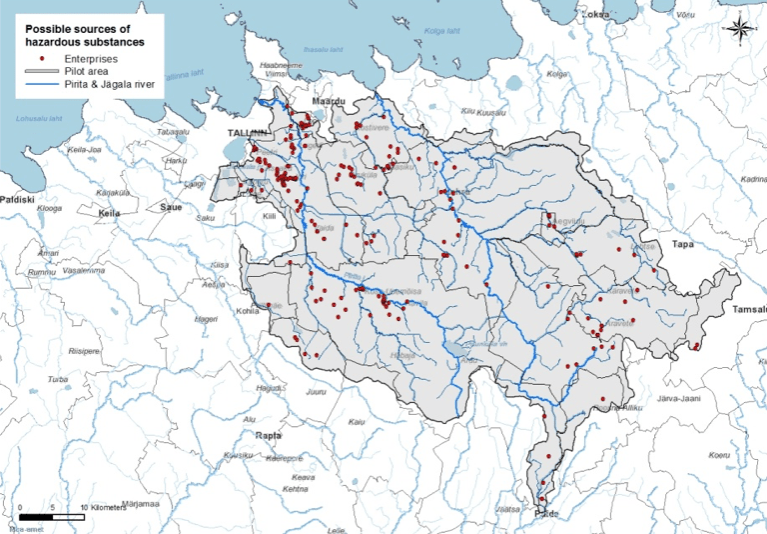Measures for reduction
There are existing measures for reducing loads of hazardous substances into the environment by priority and feasibility:
1. Regulatory measures
2. Economic measures
3. Technical measures
4. Marketing and raising consumer awareness
Water treatment technologies to reduce hazardous substances
Hazardous substances include a variety of chemical compounds like e.g. heavy metals, pharmaceuticals, perfluorinated compounds (PFAAs, including PFOS). The wide range of chemical characteristics makes it impossible to apply specific removal methods to each chemical substance. The solution is to find out and implement broad methods that can remove as many substances as possible in the same treatment step. Such general methods are oxidation with ozonation, adsorption with activated carbon and membrane filtration (technology). These treatment steps are normally added as the final treatment step at the wastewater treatment plant. The methods are not applicable as nature-based solutions.
Removal of hazardous substances in wastewater treatment plant
Mechanical Treatment
1. Screening
2. Sand Catcher / Grit Chamber
3. Primary Sedimentation
Biological Treatment
4. Biological Treatment
5. Secondary Sedimentation
Advanced Treatment
(Hazardous Substances Removal)
6. Ozonation + Sand Filtration or Activated Carbon or Membrane Filtration
A. Coagulant
Chemical precipitation and adsorption to flocs
Ozonation
Adsorption with activated carbon
Membrane filtration
To find the best available technology for removal of hazardous substances use this table: Removal of Hazardous Substances
Mapping of hazardous substances, passive sampling
Typical problems encountered when analysing the amounts of hazardous substances existing in the natural water are large water volumes and small fluctuating concentrations of the substances in concern. Passive sampling is a technique to obtain representative enriched samples with concentrations exceeding the detection levels of analysers. The mapping of potential hotspots is needed to point out the sources of hazardous substances.
Here, hotspots refer to locations existing in a watershed where hazardous substances can enter to dikes, creeks, rivers or lakes.
Method for the selection of potential hotspots and mapping



